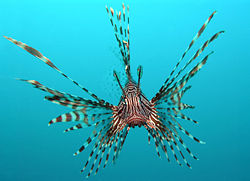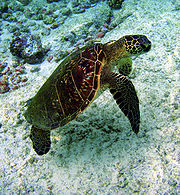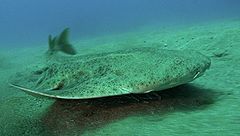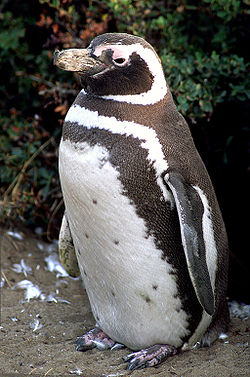Category Archives: Environmental
More Than 30 Dead Sea Turtles Found in Guatamala
More than 30 sea turtles have washed up in Guatamala’s southern coast, dead, mutilated and showing signs of suffocation, authorities have reported.
The National Council of Protected areas has said that the turtles were discovered on the beaches of Sipacate and Monterrico.
Upon closer examination the turtles appeared to have succumbed to suffocation after having been trapped in fishing nets, the organization went on to explain, they added that the fishermen responsible were using fish hooks in zones labeled as being “off limits”.
According to the law of Guatamala, fishing nets are supposed to have a turtle excluder device (TED), which will allow any turtles trapped by accident to escape quickly, easily and unharmed.
The reason that this is most troubling is due to the fact that the nesting season has just gotten underway, and there are already efforts in place to protect these magnificent turtles which are already threatened. This statement comes from the head of the organization’s hydro-biological reources department, Jose Martinez.
There are six different kinds of sea turtle which nest in Guatamala, all of them are in danger of becoming extinct, due to human activities such as poaching, over harvesting of the eggs, and of course, pollution.
There are going to be further steps taken to help the protect the turtles, but it’s a big ocean, and there aren’t enough resources to provide for 24 hour surveillance of every nook and cranny.
Surprise, Surprise.. China Oil Spill “Worse than Thought”
It comes as no surprise that the oil spill, which was labelled, “minor” has now been elevated to “worse than thought”. These oil companies like to think they have things under control, but nine times out of ten, they don’t.
Some reports on the incident are suggesting that the prevailing winds have started to blow the oil from the spill back towards the shore.
China is frantically ramping up their efforts to clean up a severe oil spill of the north east coast.
There are now murmurings and increasing fears that some rather strong winds might be blowing the oil farther than what was originally expected.
Greenpeace, a large environmental group, has said that the oil was as much as 20cm thick in some areas of the coast dangerously near the city of Dalian.
Shipments of oil from the north to the industrial belt in the south have been put on immediate hold, while they try to work this mess out.
At least one worker has died during this clean up process, they were thrown from their vessel by a wave and then drowned in the oil…
The oil spill was caused by two pipelines exploding on Friday night, and caused quite a ruckus.
Officials have stated that 430 square kilometers of the ocean in the vicinity is now polluted, however help is on the way. Oil eating bacteria and oil skimming boats are being sent to the area, and should be there soon.
Greenpeace has said that this might just be the worst oil spill in China’s history.
Fishing Experts Claim: Shark Numbers Could Increase Drastically!
It has been warned that if a federal fishing ban along the east coast of Australia gets approved, then the sharks will go up in number exponentially, and the price of seafood will more than double.
This warning was issued yesterday by fishing experts and seafood industry veterans, during a firestorm of opposition to the establishment of the eight “no take” marine protection zones. These protection zones would also include a zone off of the Tweed Coast, stretching in commonwealth waters from Southern NSW to Torres Strait.
This idea was met with opposition by Paul Burt, a local fishing expert, as he warned that if fishing was banned in that particular area that more sharks would breed and head into those waters seeking the safety they offer..
“A lot of attacks that occur with sharks … occur where the marine parks are situated,” he began.
“The fish life flourishes so much that it does become an uncontrollable habitat.”[sic]
What winds up happening in these :”uncontrollable habitats” is that there will be an increase in the fish population, and this would lead to more sharks, he went on to explain.
Peter Peters, a seafood industry veteran, who also just happens to be the owner of Peter’s Fish Market located at Main Beach, has commented that imposing more limits on where commercial fishing boats can fish might make the prices of seafood skyrocket to the extent that it would be unaffordable for many ordinary Australians.
“I would say it would definitely double the price because the fishermen won’t be catching as much, their costs of traveling extra distances will go up and that will be passed on,” he explained.
Well, deliberation will continue, hopefully the outcome won’t rely solely on one side of the story…
Hundreds Of Dead Penguins in… Brazil??
This is kind of weird… Apparently there are hundreds of dead penguins, who look like they’ve starved to death, are washing up on the beaches of Brazil of all places. This is very worrying for scientists on many levels, however the main focal point is just what is causing then to perish.
Somewhere in the neighborhood of 500 of the flightless birds have been found over the past week and a half on Peruibe, Praia Grande, and the Itanhaem beaches in Sao Paolo State. This comment comes from Thiago de Nascimento, who is a biologist with the Peruibe Aquarium.
The majority of these penguins were Magellan penguins, on their way north from Argentina, Chile and the Falkland Islands, searching for food in warmer waters.
What is so troubling scientists so much, is that many of these penguins are not finding the food they seek. Autopsies performed on many of the penguins revealed that their stomachs were entirely empty..
Researcher are investigating whether the fault lays in strong currents, or colder waters than what have been the norm, which may have caused the species the penguin relies on for food to thin out, or if maybe human activity is to blame.
“Overfishing may have made the fish and squid scarcer,” Nascimento has explained.
He also said that it is common for penguins to make their way north this time of the year. Unfortunately, some of them do happen to lose their way and perish from hunger or exhaustion, and then wind up dead on the Brazilian coast far from their homes.
However, in these numbers it is a grave concern… Hopefully they find an answer soon, before these creatures wind up the going the way of the do do bird.
China New Proud Owner of BP-like Spill?

If it wasn’t enough that BP had a spill in the Gulf of Mexico, now a few more pipes from the big oil conglomerates have ruptured!
The ground heaved as the first of the two pipelines ruptured, which led the residents and dock workers near Dalian’s Xingang Harbor to fall to their knees, thinking an earthquake was occurring.
What they didn’t know, was that the shuddering of the ground was being caused by yet another environmental mishap by the major oil companies.
These two pipelines located near the port, ripped apart at the seams this past Friday, spewing a substantial amount oil into the Yellow Sea, and shooting flames more than 60 feet into the air!
Thankfully, there were no serious injuries reported and they managed to keep the fire in check, and have it completely under control as of last Saturday. However, by Monday hundreds of ships were attempting to clean up the mess, which extended an astonishing distance. The port operations in the area were expected to be ground to a halt for at least a week!
Meanwhile, Environmentalists are still trying to figure out exactly how big a catastrophe this actually is. They are trying to estimate the actual damage done to the beaches and fisheries at one of China’s most important ports. Smoke from the raging inferno has plagued downtown Dalian over the weekend.
The actual amount of damage done will depend on quite a few variables, such as containment of the oil, so says a professor at the Chinese Research Academy of Environmental Sciences, Fu Guo. There is a large shellfish farm, which is operated by the Zhangzidao Fishery Group, only a stone throw’s away from the spill.
“There have been accidents in the past, but this one was more serious,” granted Fu, “The spill happened close to the city, so the impact on residents may be more severe.”
The China National Petroleum Corporation, which happens to be the biggest oil company in the nation, and also the owner of the pipelines which ruptured in Dalia, Have not come forward with the cause of the disaster, but the authorities are looking into a Liberian-flagged oil tanker, which is a suspect as it was unloading at the time the pipelines ruptured.
Analysts have said that the mishap may have been caused by improper loading procedures of the oil from ships to the storage tanks in the harbor.
You would think that the giant oil conglomerates would take a look at the recent “mishaps” around the globe and step up safety procedures.. However there seems to be a general nonchalance about the whole affair, and these oil companies continue to have mishaps… It seems for the oil companies to take these “mishaps” seriously, there needs to be significant human loss or suffering, and by then it will be too late…
Bearded Goby Helps to Salvage a Dead Ocean Zone
Researchers have found a “super fish” which is actually able to not only survive, but thrive in a previously thought uninhabitable region off of Africa’s south-west coast, which also happens to be infested by jellyfish.
This “super fish” is actually helping to keep the local ecosystem going, and is single handedly helping to preserve an important fishery as well.
One of the ecosystems off the coast of Namibia, the Beguela ecosystem, was at one point is history chock full of sardines. However, overfishing of the area, and various other environmental factors have caused the population of sardines to take a nose dive, and the ecosystem became overrun with algal blooms and jellyfish swarms.
The algae has almost consumed the entire oxygen supply of the water, and the waters closer to the surface are full of jellyfish and algae.
It has been discovered that bearded gobies are making their home at the very bottom, and they are the only vertebrate to do so. The stomach contents were examined, and revealed that these bearded fish eat the dead algae which falls from the surface, and they also eat the jellyfish! This astounding discovery was made by Anne Utne-Palm, of the University of Bergen, Norway and several of her collegues.
The team of researchers also discovered that the gobies are able to survive for hours in water with extremely low oxygen levels by lowering their metabolic rate, and when they run low they pop back to the surface for more oxygen!
What a Fish!
The Risk of Fish Species Contamination Increases Based on Population Density

Lionfish - A problematic invasive species that might have escaped from an aquarium in Florida to breed amd wreck havoc in the caribbean.
A paper has recently been published by Gordon Copp, Lorenzo Vilizzi, and Rodolphe Gozlan in the journal Aquatic Conservation: Marine and Freshwater Ecosystems which eludes to the fact that the higher the population density in England, the more likely the natural ecosystems can be tainted with pet fish.
This is not a new piece of information. It has been known for quite some time that the ecosystems which are closer to roads, fish markets and pet shops are more likely to be subjected to pet fish than those which are not close to these avenues.
The object of the study was to perform a statistical analysis to take a look at the spacial relationships between pet fish contamination and the demographics which led to these fish being released into the wild, and also to test whether or not these demographic factors are a reliable way of estimating how many alien species are introduced into these ecosystems.
The case study was carried out using an intermediate scale for all of England, dividing the country into 1500 squares of 10 square kilometers each.
The study consisted of the following data sets to be used in their analysis: non-native fresh water fish occurrences in the wild; the numbers of non-native fish imported, and demographic information such as: numbers of humans, pet shops, garden centers and fish farms per unit area.
The study found that the incidences of pet fish contamination directly co-related to the density of the human population.
If you would like to learn more check out the paper: Copp, GH, L Vilizzi and RE Gozlan (2010) The demography of introduction pathways, propagule pressure and occurrences of non-native freshwater fish in England. Aquatic Conservation: Marine and Freshwater Ecosystems 20, pp. 595–601.
Research Reveals that Old Theory of Phytoplankton Growth Wrong
A recent study has revealed that the previously accepted theor of how and phytoplankton appear in the worlds’ oceans is in fact not correct.
The results of the study have overturned over 50 years of common knowledge about the growth of phytoplankton, which is the foundation of almost all life in the ocean as well as many major fisheries. These results also bring to light new concerns that global warming may actually be stunting the growth of phytoplankton, rather than increasing it.
The study was published in the journal Ecology by a professor of botany at the Oregon State University, Michael Behrenfeld, who just happens to be one of the leading experts in the world when it comes to using remote sensors to take a gander at the productivity in the ocean. This study was also backed up by NASA, it’s good to see they still have an interest in what goes on down here, and not just in what goes on in space.
The new study has concluded that the theory developed in 1953, the “critical depth hypothesis”, is not only incomplete, but also inaccurate in explaining summer phytoplankton appearances which have been observed for the last few centuries in the North Atlantic Ocean. These appearances are the foundation of many of the worlds’ fisheries.
The old theory stated that due to increased light in the spring, the phytoplankton bloomed more, however its been discovered that the production actually goes up in the middle of winter, effectively blowing that theory out of the water.
The new theory is that the winter storms churn the water, and make it more difficult for the organisms that eat the phytoplankton to find them, hence the phytoplankton is more abundant in those months.
Red Sea Might Just Turn into DEAD Sea!
A recent study has found that Global Warming is slowing the growth of Coral in the Red Sea, and all growth could stop by the year 2070.
By utilizing CT (computed tomography) scans, some scientists over at the WHOI (Woods Hole Oceanographic Institution) have found that the greenhouse effect (which is the leading cause of global warming) is killing off one of the predominant species of coral in the Red Sea.
The summer temperatures on the sea surface remained at roughly 1.5 degrees Celsius above what’s the norm for the past ten years. The growth of the coral, Diploastrea heliopora, has seen a marked decrease of 30% and as has been quoted by scientists, “could cease growing altogether by 2070” or even sooner, as the research team quoted in the July 16th issue of the journal Science.
“The warming in the Red Sea and the resultant decline in the health of this coral is a clear regional impact of global warming,” said a WHOL postdoctoral investigator, Neal E. Cantin, who is also the co-lead researcher on the project. In the 1980s, he explained, “the average summer [water] temperatures were below 30 degrees Celsius. In 2008 they were approaching 31 degrees.”
This could spell some big trouble for the Red Sea. If the Coral is being affected in such a way, what of the other species? Could it be that the Red Sea will become another DEAD Sea in the very near future? Scientists are working round the clock on a solution for Global Warming, but it seems a solution is still years from being worked out, and in the meantime we are losing out.
“Living Fossils” Give Clues To Deep Sea Life On Aussie Reef
St. Lucia, Queensland – Some researchers from the Queensland Brain Institute have been utilizing high-tech gadgets to document creatures at depths which would seem impossible.
By using some new deep-sea cameras and other instrumentation which is new to Australia, a myriad of creatures were recorded on film at a depth of 1,400m below sea level 350km northeast of Carins, in the Osprey Reef. Some of the creatures documented were giant oil fish, six-gilled sharks, hordes of crustaceans and even some unidentified species, making the find rather incredible. These creatures closely resemble some prehistoric species, and have been dubbed “living fossils” and it is hoped they will provide some new insights into life in the deep sea.
Professor Justin Marshall, who was leading the team of researchers, used special high sensitivity cameras, which were placed on the ocean floor, and remote controlled, to snap some amazing photographs of these creatures. The equipment was funded by the Australian Research Council, and was built at the Harbor Branch Oceanographic Instituted in Florida.
Professor Marshal commented, “Osprey Reef is one of the many reefs in the Coral Sea Conservation Zone, which has been identified as an area of high conservation importance by the Federal Government. Therefore, it is paramount that we identify the ecosystems and species inhabiting the area. As well as understanding life at the surface, we need to plunge off the walls of Osprey to describe the deep-sea life that lives down to 2000m, beyond the reach of sunlight. We simply do not know what life is down there and our cameras can now record the behavior and life in Australia’s largest biosphere, the deep-sea.”
Exciting times lay ahead for the researchers, as more research is being funded, and these “living fossils” could lead to new discoveries, and explain just how they survive down there, when it seems impossible.







